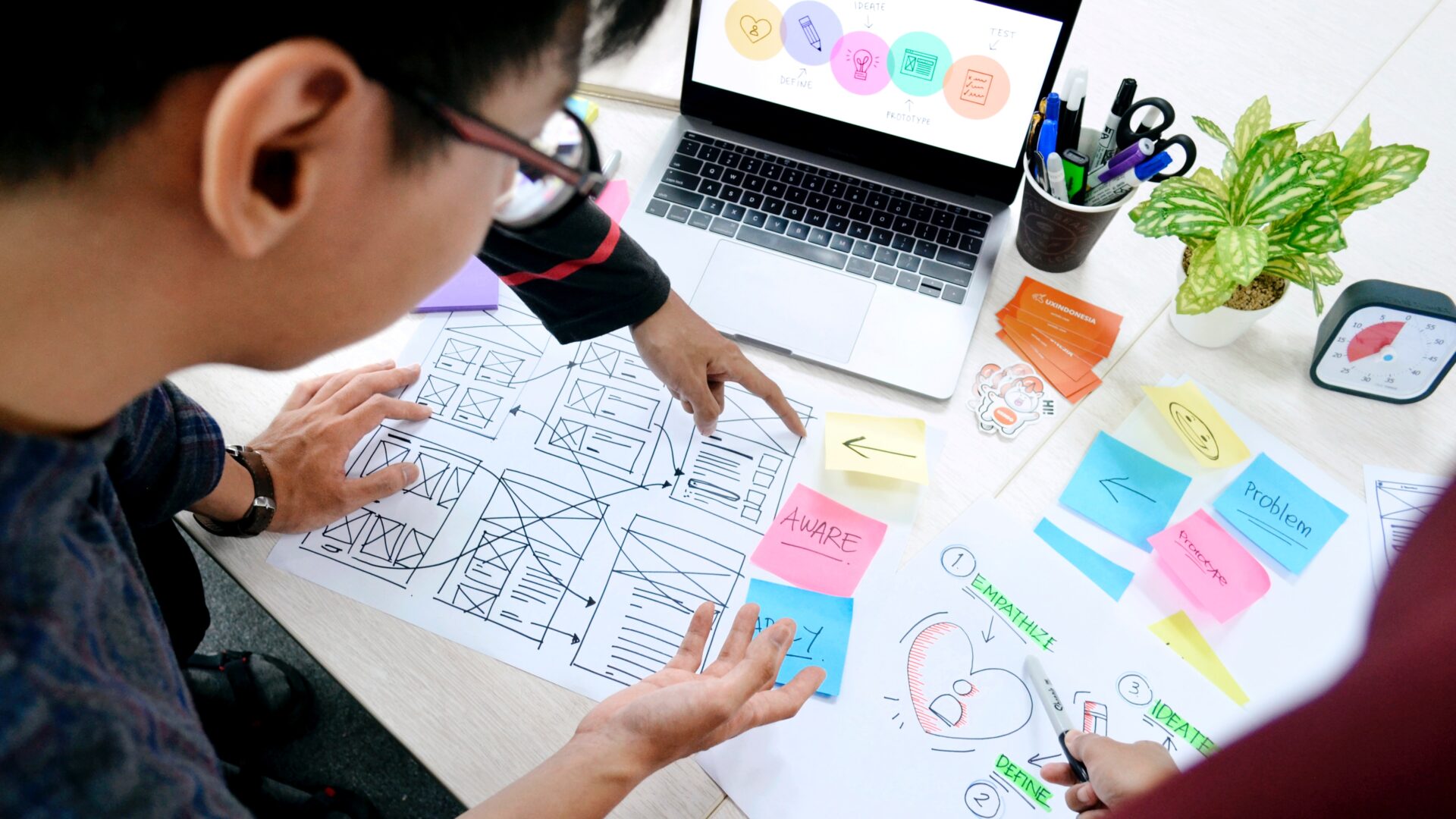Investment in customer experience drives customer satisfaction, brand loyalty, and more. We use a few key tools to help our clients improve their customer experience—Service Blueprints and Journey Maps.
What are Service Blueprints and Journey Maps?
Before we delve into the differences and use cases, let’s get a grasp of what these tools are all about.
Service Blueprints
Service Blueprints visualize the service journey from both the customer’s and the employee’s perspective.
Service Blueprints consist of three layers:
- Top layer: the steps and interactions the customer has while using the service.
- Middle layer: the visible touchpoints where customers interact with the service provider.
- Bottom layer: the behind-the-scenes processes and resources involved in delivering the service.
Journey Maps
A Journey Map is a visual representation of the entire customer journey, weaving together each touchpoint and interaction.
Unlike Service Blueprints, Journey Maps focus solely on the customers’ emotions, thoughts, and experiences at each stage of their journey. They are valuable tools for businesses to connect emotionally with customers and improve their experience.
Complementary tools
Service Blueprints and Journey Maps have the same goal of improving customer experience, but they use different methods to achieve it. Let’s dive into the key differences of these tools:
Depth of detail
Service Blueprints delve deep into the nitty-gritty of service delivery, mapping out internal processes, resources, and frontline interactions. They provide a detailed view of how the service operates from an organizational perspective.
Journey Maps show the overall customer experience, including emotions, problems, and happy moments at each interaction. Their strength lies in presenting a holistic, empathetic view of the customer’s experience.
Scope
Service Blueprints empower service designers, process managers, and frontline staff to streamline processes, optimize resources, and ensure seamless service delivery.
Journey Maps, on the contrary, are the perfect companions for customer experience strategists, marketers, and product designers. Understanding customers’ emotional highs and lows enables strategies that delight customers and earn their loyalty.
Metrics
Service Blueprints are more quantitatively focused, allowing businesses to measure and analyze specific service metrics. This includes metrics like service efficiency, average handling time, and resource utilization.
On the other hand, Journey Maps offer a qualitative perspective by capturing the emotional and experiential aspects of the customer journey. Metrics like customer satisfaction, Net Promoter Score (NPS), and customer loyalty metrics align with Journey Maps.
Use cases
Now, let’s look at their real-world applications.
Service Blueprint use cases
Service Blueprints help optimize service efficiency and streamline internal processes by identifying bottlenecks and optimizing resource allocation. This empowers businesses to deliver services with speed and precision. Additionally, Service Blueprints support smooth integration of new services into existing processes and provide a consistent customer experience.
Service Blueprints also help businesses create effective training programs for frontline staff by showing how service delivery works. This ensures employees are well-equipped to provide exceptional service.
Journey Map use cases
Journey Maps display customer emotions throughout their journey. This helps businesses create products that meet customer desires and needs. Creating a customer journey map helps find and fix problems in the customer experience. Building strong customer relationships by understanding customers’ emotions throughout their journey helps companies build deeper connections and foster customer loyalty.
Service Blueprints and Journey Maps can support business leaders in creating great customer experiences. While Service Blueprints delve into the organizational intricacies of service delivery, Journey Maps focus on customers’ emotions, experiences, and motivations. Remember, both tools are equally essential to customer experience excellence.




